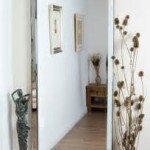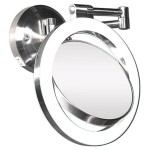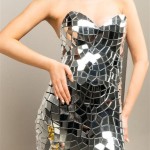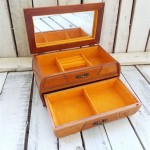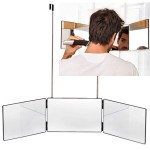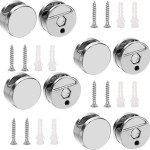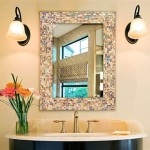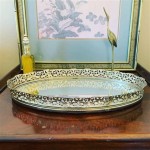Baby Wall Mirrors: A Reflection of Development and Delight
Baby wall mirrors serve a dual purpose: they offer developmental benefits for infants and add a touch of decorative flair to a nursery. Understanding the types available, their developmental advantages, and safety considerations ensures parents can make informed choices when incorporating a mirror into their baby's environment.
Mirrors contribute significantly to an infant's cognitive and social-emotional development. From the early months, babies are fascinated by faces, and a mirror provides a safe and engaging way for them to explore their own. This self-recognition is a crucial milestone, fostering a sense of self and individuality. Observing their reflections also allows babies to experiment with facial expressions and movements, enhancing their understanding of cause and effect.
Beyond self-discovery, mirrors can stimulate visual development. The reflective surface captures and bounces light, creating captivating visuals that hold a baby's attention. This visual stimulation helps develop their focusing abilities and depth perception. Mirrors can also encourage tummy time, as babies are motivated to lift their heads and engage with their reflection, strengthening neck and back muscles.
A wide variety of baby wall mirrors cater to diverse needs and preferences. Acrylic mirrors are a popular choice due to their shatter-resistant properties, prioritizing safety. These mirrors often feature rounded edges and soft frames for added protection. Many are designed with stimulating elements, incorporating colorful borders, textured frames, or attached toys to further engage the baby's senses.
Wooden framed mirrors offer a more traditional aesthetic, blending seamlessly with various nursery décor styles. These frames can be painted in a range of colors, from soft pastels to vibrant hues. Some wooden framed mirrors also incorporate educational elements, such as letters, numbers, or shapes, providing additional learning opportunities.
Sensory mirrors are specifically designed to stimulate multiple senses. They might feature textured surfaces, crinkly fabrics, or small bells attached to the frame, encouraging tactile exploration. Some sensory mirrors incorporate lights and sounds, further captivating the baby's attention and promoting sensory integration.
When selecting a baby wall mirror, safety should be the paramount concern. Parents should ensure the mirror is securely attached to the wall using appropriate hardware, preventing it from falling and causing injury. Regularly inspect the mirror for any signs of damage, such as cracks or loose parts, and replace it immediately if necessary. Choosing a mirror made from shatter-resistant materials, like acrylic, significantly reduces the risk of breakage.
Placement is also crucial for maximizing the benefits and safety of a baby wall mirror. The mirror should be positioned at the baby's eye level, allowing them to easily see their reflection. Avoid placing the mirror directly above the crib, as this poses a potential hazard. Instead, consider placing it on a nearby wall where the baby can engage with it during tummy time or playtime on the floor.
Cleaning a baby wall mirror is a straightforward process. For acrylic mirrors, a soft, damp cloth is usually sufficient to remove smudges and fingerprints. Avoid using harsh chemicals or abrasive cleaners, as these can damage the reflective surface. Wooden framed mirrors can be dusted regularly with a soft cloth, and the frame can be cleaned with a mild wood cleaner if necessary.
Incorporating a baby wall mirror into a nursery offers a multitude of benefits, from promoting developmental milestones to adding a decorative touch. By understanding the various types available and prioritizing safety considerations, parents can create a stimulating and enriching environment for their little one.
Beyond the basic functionalities, some manufacturers offer innovative designs that incorporate additional features. These might include mirrors with built-in music players, nightlights, or even temperature displays. Such features enhance the versatility of the mirror, making it a multi-functional addition to the nursery.
The size of the mirror is another factor to consider. Smaller mirrors are ideal for compact nurseries or for creating a focal point within a larger space. Larger mirrors can create a sense of spaciousness and provide a wider reflection for the baby to engage with. Ultimately, the choice of size depends on the individual needs and preferences of the parents and the overall aesthetic of the nursery.
While choosing the right baby wall mirror, consider the existing décor of the nursery. The mirror's frame, color, and shape should complement the room's style and color palette. Whether the nursery has a modern, minimalist, or traditional theme, a suitable mirror can enhance the overall aesthetic and create a cohesive look.
Finally, remember that a baby wall mirror is not just a decorative element but a tool that contributes to a baby's development and provides them with endless fascination. By carefully selecting and placing a mirror, parents can create a stimulating and enjoyable environment that fosters growth and discovery.
The Importance Of Montessori Wall Mirror And Why You Need One How We

Educo Wall Mirror With Handrail
The Importance Of Montessori Wall Mirror And Why You Need One How We

Babies And Mirrors Montessori Baby Week 25

Pull Up Baby Mirror Mirrors Wall Panels Ypo

Baby Safe Mirror For Montessori Play What You Need To Consider

Montessori Wall Mirror New Zealand

Infant Wall Mirror With Metal Rail Play N Learn Educational Resources

Pin On Nursery

Baby Safe Mirror For Montessori Play What You Need To Consider

